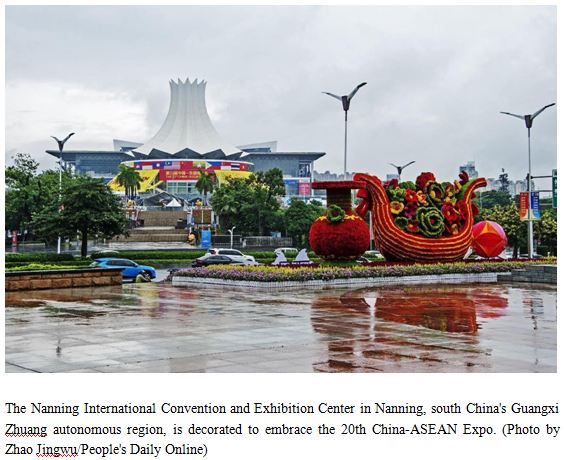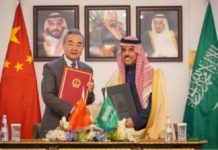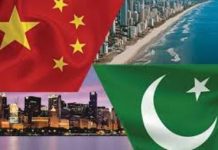By Pang Geping, Li Zong, People’s Daily
The 20th China-ASEAN Expo and China-ASEAN Business and Investment Summitwas held on Sept. 16 in Nanning, capital of south China’s Guangxi Zhuang autonomous region.
Over the past 20 years, the expo and summit has built collaboration and cooperation mechanisms between China and ASEAN in multiple areas, injecting positive energy into the region and the world’s peace and stability, development and prosperity. It has served as a sound platform that strengthens communication and exchanges between the two sides.
In recent years, more and more featured products have entered the Chinese market via the China-ASEAN Expo, such as durians from Vietnam,mangosteens from Thailandand coffee from Indonesia.
The China-ASEAN Expo and China-ASEAN Business and Investment Summithas become an important platform for communication and cooperation between China and ASEAN, said Wei Zhaohui, secretary-general of the expo’s secretariat.
China and ASEAN established a strategic partnership at the China-ASEAN (10+1) leaders’ meeting in 2003, which marked a new chapter of friendship between the two sides.
At this meeting, China proposed to hold the China-ASEAN Expo in Nanning on an annual basis starting in 2004. In 2004, the first China-ASEAN Expo was successfullyheld and permanently settled in in Nanning, and the China-ASEAN Business and Investment Summit was also held.
The expo and summit has built a bridge of friendly cooperationin multiple fields, forming a new channel for China-ASEAN cooperation. It is a regional public product and international cooperation platform serving China and ASEAN, and even the Regional Comprehensive Economic Partnership (RCEP) and the Belt and Road Initiative.
The previous 19 sessions of the expo and summit were attended by a total of 182 Chinese and foreign leaders, over 3,800 ministerial-level guests and heads of international organizations, as well as more than 1.1 million merchants.
“Thanks to the China-ASEAN Expo and China-ASEAN Business and Investment Summit, the cooperation between the two sides has extended from trade in goods, investment, and services to more areas such as international capacity cooperation and cross-border industrial park construction,” said Zhai Kun, a professor in the School of International Studies, Peking University, adding that the expo and summit has also fostered exchanges in various fields including artificial intelligence, internet technology, and education.
As a result, the cooperation between the two sides is progressing towards a larger scope, with higher standards and at deeper levels, Zhai said.
High-level dialogue and negotiations, multi-level economic and trade activities, and wide-ranging high-level forums were held during the expo and summit. They have showcased the comprehensive cooperation between China and ASEAN over the past 20 years, which hasnot only brought benefits to the region, but also promoted global economic and trade development.
Last year, the RCEP came into effect, creating the world’s largest free trade bloc. “The expo has vigorously promoted the construction of the China-ASEAN Free Trade Area and the RCEP, opening up broader space for regional economic and trade cooperation, accelerating regional economic integration, and injecting strong impetus into regional prosperity and stability,” saidBenjamas Tanvetyanont, Thai consul-general in Nanning.
Trade cooperation is an important witnessto the progress of bilateral relations. Statistics show that the bilateral trade volume between China and ASEAN has increased from over $100 billion in 2004 to $975.34 billion in 2022.
China has maintained ASEAN’s largest trading partner for 14 consecutive years, while ASEAN has been China’s largest trading partner for 3 consecutive years. China-ASEAN economic and trade cooperation has steadily and continuously developed, becoming a successful example of regional cooperation in the Asia-Pacific region.
In recent years, with the construction and opening of more roads and railways, as well as the upgrading and transformation of various ports, the increasing logistics connectivity has accelerated the development of ASEAN countries.
China and ASEAN have joined hands to build a China-ASEAN community with a shared future, promoting common development and prosperity, and enabling over 2 billion people to live a better life. This serves as a vivid example of building a community with a shared future for mankind.
The annual throughput of the Beibu Gulf Port in Guangxi has exceeded 7 million twenty-foot equivalent units, and ASEAN products such as durians and frozen shrimps are entering the Chinese market via the port.
So far, the China-Laos Railway has transported over 20 million passengers. Besides, the agreedinvestment for the Malaysia-China Kuantan Industrial Park stood at about 46 billion yuan ($63.14 billion), with a cumulative industrial output value of over 60 billion yuan.
China and ASEAN are witnessing deepening and solidifying exchanges and cooperation in education, livelihood, and health. The two sides have sent over 200,000 students to each other.
Besides, Chinese universities have established majors in the official languages of the 10 ASEAN countries, and ASEAN countries have set up 42 Confucius Institutes and 39 Confucius Classrooms. Currently, all 10 countries have become popular destinations for Chinese tourists, and both sides are major sources of tourism for each other.
“In the past 20 years, the China-ASEAN Expo has played an increasingly prominent role as an international public product serving global trade. With the accelerated development and upgrading of the expo, the cooperation between China and ASEAN will undoubtedly flourish and yield even more fruitful results,” said Wei.


















